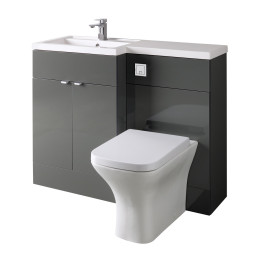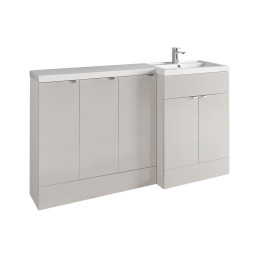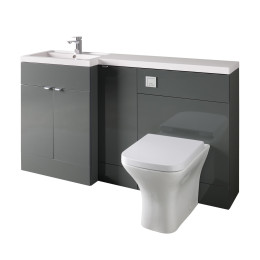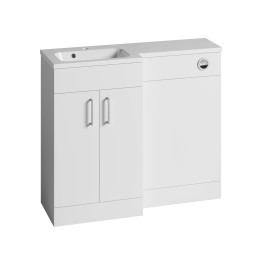Combination Vanity Units
Combination furniture is the term used to describe the bathroom essentials, basin and toilet, that have been combined into one unit. This unit will come with a built-in basin, back to wall toilet pan and storage cupboard.
For a variety of reasons, a toilet and basin combination unit is ideal. Not only will you save space and money, but your bathroom will also seem cleaner. These units offer a lot of convenience and usefulness. The storage unit itself has plenty of storage space, and the toilets are designed to accommodate a concealed cistern, which saves you room while concealing the plumbing. Because of their compact size, these combination units are ideal for modest bathrooms. Our basin and toilet units are beautiful, compact, and functional, with long warranties to give you complete peace of mind.
Combination furniture is a great choice for small bathrooms. Available in a wealth of sizes, where you're even able to choose between a larger basin and smaller toilet area, or vice versa, to fit your bathroom space. You're also able to choose which hand the basin and toilet unit are situated. The also provide you with a clutter free bathroom, hiding away the pipework and cistern required and providing storage for the bathroom essentials, in a space that may otherwise go unused.
If your bathroom is a little bit short on floor space, this style of furniture can solve the problem of where to fit everything. Designed to maximise the use of the space.
Our combination vanity units are available in a wide range of different colours, whether you are looking for a classic gloss white finish or a bolder gloss grey, we will be able to supply you with the exact units to make your bathroom pop!
We also have an excellent range of bathroom mirrors available which not only has its functional use, but also adds depth to smaller bathrooms. Whether you are looking for illuminated mirrors to brighten your bathroom or a mirror cabinet that'll provide storage, we have everything to brighten up your space.
Did you know we also provide bathroom accessories? Be sure to check out our accessories page by clicking here to check out those essential finishing touches. From practical towel rail and stylish corner baskets to expand your storage space, we have everything to make your dream bathroom feel complete!
We pride ourselves on having fantastic products and customer service when you shop with Bathroom Supastore, this is backed up by our 'Excellent' rating on TrustPilot. For delivery information and any queries, you may have concerning our amazing range of bathroom furniture please give us a call on 0845 271 9929 and we will be more than happy to help!





































